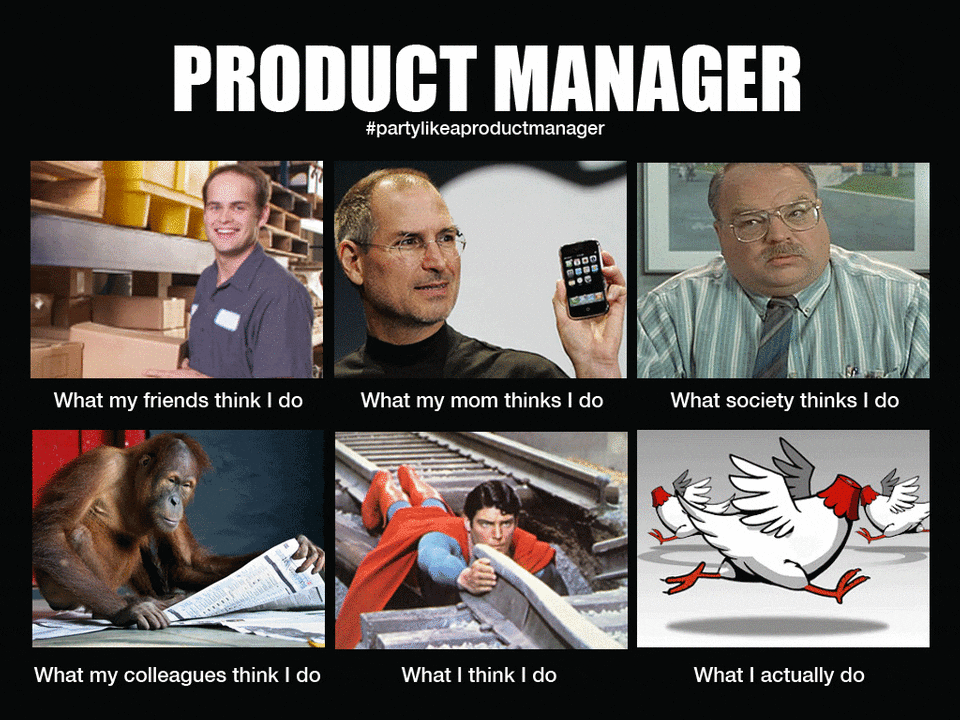How is product marketing different from traditional marketing? Does customer marketing differ from product marketing?
Is there actually a difference between product marketing vs regular marketing? And where does brand maketing come in all this?
Why even bother asking these questions? Surely they’re all the same, right?
Surprisingly, no, they’re not.
Setting each form of marketing side by side can become its own game of Sesame Street’s “One of These Things”.

Understanding what makes product marketing unique could be the key to unlocking your product’s full potential. So let’s dive straight into it. You’ll be telling one from the other in no time.
What is Product Marketing?
The process of product marketing is exactly how it sounds: introducing a product to the market, promoting it, and selling it to prospective customers. But wait… isn’t that just how marketing works? Let’s not try to teach grandmother to suck eggs here.
We’re sure you know what marketing involves. However, product marketing (unlike marketing in the broader sense) uses specific strategies to hone in on what target audiences want and use what’s learned to increase their demand for particular products.
Without it, your business or brand may not be able to achieve the maximum potential of the products and services on offer. So, how does it work?

What Does Product Marketing Do?

Both product marketing vs marketing divisions in a business align themselves to the same end goal but belong to different departments, employ different tools and are each distinctly managed.
Whereas product marketing focuses on internal activities surrounding a project, marketing efforts are all about the external factors.
To generate high demand, product marketers ensure products solve specific customer pain points.
They ensure product strategy is aligned with customer needs by collaborating with departments like engineering, sales, and content development.
The product strategy is measured by objectives and key results (OKRs) to know what success looks like and relies more on data and analytics.
Marketing, on the other hand, focuses purely on creating customer value.
Marketers originate the most effective messaging that can resonate with a product’s potential audience – and urge them to buy.
Based on continuous audience feedback, they respond by fine-tuning elements such as packaging and product design, and their efforts encompass both brand and advertising management, public relations, web development, customer service, and product management.
What is Tech Product Marketing?

Technology product marketing – as the name implies – focuses on high tech or IT products, which are usually software-based and typically sold in a B2B environment.
Marketing managers need a considerable amount of tech product knowledge along with interpersonal communication skills to explain where features are adding value (while handling any objections thrown at them!).
They are essentially the flagbearers of all updated information gleaned from online stakeholder, senior management meetings – and, most importantly, user research. They are also responsible for relaying these insights to the departments able to act on them.
Tech product marketing therefore relies on the extraction and implementation of key insights, such as those derived in performance recaps, stakeholder meetings, or user research calls.
A tool like tl;dv can capture and tag meeting insights in real-time. These timestamped video moments can be combined with other meeting moments in the form of neat little reels. You can literally clickedy-click and everybody is in the loop, with minimum demand on anyone’s time.
As well as being able to create these shareable, bitsize reels, tl;dv as an AI meeting assistant can summarize essential meeting takeaways by automatically identifying questions, insights and action points.
It’s a really cool way of documenting meetings. You’ll be able to keep track of discussions and even enrich user research repositories with actual video clips from user interviews. Tech product marketers use the tl;dv library as a search engine for past meeting moments. If there’s even so much as a whisper of the word “marketing” in a call, you’ll be find it in seconds.
What Does Tech Product Marketing Do?

Put simply, tech product marketing is there to ensure you’re applying the right approaches when targeting a certain level of customers.
According to Smart Insights, once high-tech customers are ready to talk with a salesperson, the majority of those engineers prefer to do so online, with 59% opting for email and 5% online chat, as opposed to 24% engaging with a salesperson over the phone and only 8% in person.
Product marketing vs marketing for tech products requires flexibility and willingness to evolve in harmony with marketing technology initiatives.
Rather than continuing a fixed marketing strategy likely to lose you more customers and competitors, implementing what’s known as an omnichannel approach can be incredibly handy for tech product marketers. It’s built around the personalization that comes from responding to real-time customer analysis and feedback. In fact, we have developed our own RICE prioritization framework to help product managers minimize personal biases and always determine leading features, products or initiatives to broadcast to target customers.
What is a Product Market Strategy?

Bringing a new product to market is a majorly exciting undertaking, often hurled forward with our own tiresome optimism of it being a flying success with its target audience. Rather than take the blame for bad news, let’s shift it to Harvard Business School professor Clayton Christensen, who noted that each year 30,000 new products are launched — and a whopping 95 per cent of them fail.
As expected, following an effective product marketing strategy is pivotal when it comes to giving your product a fighting chance. Your new product positioning, price, and promotion are determined by it. As you take your product from development to launch, it informs you of new audiences and markets to which your product should be introduced. Product marketing vs marketing strategies offers more flexibility throughout this journey.
Now we’ve grasped the basics, let’s delve into the deeper differences. As you’ll spot, more than one of these things is not like the other…
Product Marketing vs Marketing
It would be a grave mistake to lump product marketing into the same bucket as conventional marketing.
A product marketer oversees both the launch of a product as well as the marketing strategy that supports it, which is why product marketing is an integral part of any business’s marketing, sales, and product teams.
Product marketing vs marketing, in general, uses laser point focus and strategy to create the product, any services surrounding it and its messaging to attract target audiences.
However, conventional marketing incorporates a broad range of communications, project management, operations, and execution to get the product in front of the right people.
A key principle of product marketing vs marketing is being able to listen to specific customer needs and make them the start feature when it comes to delivering a solution.
A prime use case would be MailChimp, which recently expanded to become an all in one marketing suite and not just an email marketing tool. What drove this move was a certain discovery from their product marketing team – their customers mainly use their tool to help grow their business.
What makes it so successful?
Rather than waxing lyrical about its software’s in-depth analytics, MailChimp opted to develop messaging that focuses on exactly how their customers can use them to reach their particular business goals.

What can we say? The strategy works – it’s what helps MailChimp earn a tidy revenue and maintain it’s status as the most well-known email marketing platform.
Customer Marketing vs Product Marketing

Thinking these two marketing avenues share the same end goals is a big misconception, but one that’s very easy to unpack once knowing the differences between product marketing vs marketing in the broader sense.
As we know, product marketing centres its efforts around the product, its accessibility and its overall usability for its intended customers. However, the purpose of customer marketing is to determine the most effective means of communication in delivering this information to customers.
Using customer segmentation can divide customers into groups and subgroups based on common characteristics in order to better market to them.
This data-driven approach has been shown to lead customer marketers to a true single customer view; the ideal customer to shape their combined departmental efforts around.
What is the Difference Between Product Marketing vs Product Management?

The product marketing and product management teams are close allies, but thereare differences. What are the differences bettween product marketing and product management?
Well, where product marketing uses tools such as the Sean Ellis test to meet product-market fit criteria and lead the product’s lifecycle, product management uses this knowledge as the compass to guide each step of an overall project’s lifecycle, from establishing the first kick-off meeting to delivering the end result.
It’s the division responsible for aligning the product requirements with market demands. The most polarising difference between product marketing vs marketing is the former’s superior ability to hone into customer needs with precision. This is something both product marketing and product management actually have in common, in the same way as digital marketing vs product management does.
Product Manager HQ also spots how a single person might best suit both roles due to the close similarities in their skill sets. These are:
- Customer obsession
- Mastery of both qualitative feedback and quantitative metrics
- Strong communication skills
- Drive to execute at a quick pace to unlock maximum impact
- Deep influence to align stakeholders to the strategy
Brand Manager vs Product Manager

This is one that causes a fair amount of confusion. A product offering can often define a company, and form the basis of their entire brand. However, a brand can not be considered as a company’s product.
In the case of brand vs product, the two have very different functions, and need very different types of management.
Products are goods or services placed in circulation to benefit customers.
Brands are more of an abstract concept to which the “why” of a company is used alongside visual and audible features to create certain customer perceptions and help build relationships.
As Sir Richard Branson puts it:
“Branding demands commitment; commitment to continual reinvention; striking chords with people to stir their emotions; and commitment to imagination. It is easy to be cynical about such things, much harder to be successful.”
Richard Branson Tweet
A core distinction between product marketing vs brand marketing is its longevity of focus.
Whilst product marketers work to promote a particular product with specified – with most likely time-sensitive targets to meet, it’s the brand marketers responsibility to build and maintain an ongoing brand identity.
A Brand Manager has the crucial task of protecting the brand. They ensure all products, services and product lines reflect the ever-changing consumer research, and make important decisions based on their close analysis of consumer behaviour.
They are the key communicators making sure that every department within the company, as well as other agencies, are honouring the brand they have worked tirelessly to.
A Product Manager (PM) connects business goals, customer goals, and the technology to make them a reality.
Therefore, it is important for PMs to be able to articulate and guide their product teams in identifying and delivering solutions to the market.
Product Manager vs Product Marketing Manager

Looking into the main differences of product marketing vs marketing, traditional marketing incorporates product management as part of its overall plan.
The beating heart of product management is something known as the backlog, which stores and prioritizes every task and initiative the development team must fulfil. If it’s not on the backlog, it probably won’t get done. That’s why it’s the Product Manager’s responsibility to ensure all items on the backlog are accounted for so developers aren’t left wondering what to do next.

You’ve probably heard of the ‘Bubble & Bin’ method for its ability to allocate certain ‘areas’ for each item being sorted. But we say “move over”, the Bucket Sort method is the clear superior choice for its ability to save valuable time.
Although belonging to the same ballpark, we’ve found being a Product Marketing Manager (PMM) is a whole different game. Where product managers work towards sales and customer metrics, for PMM marketing, it’s all about creating customer value out of the product.
They are responsible for keeping up with research and adapting to any changes it brings. As a result of using product insights and market knowledge, they originate a positioning statement and consult across internal departments to determine how client needs can be met, thus helping to create demand for new offerings.
Clearly, in the battle between product marketing vs marketing as we generally perceive it, product marketing reigns supreme when it comes to needlepoint customer focus. That’s because product marketing meets user pain points with effective resolve and converts their satisfaction into sales. The next time a friend or colleague challenges your knowledge of product marketing vs marketing, you’ll be well versed in playing the “versus” game.







